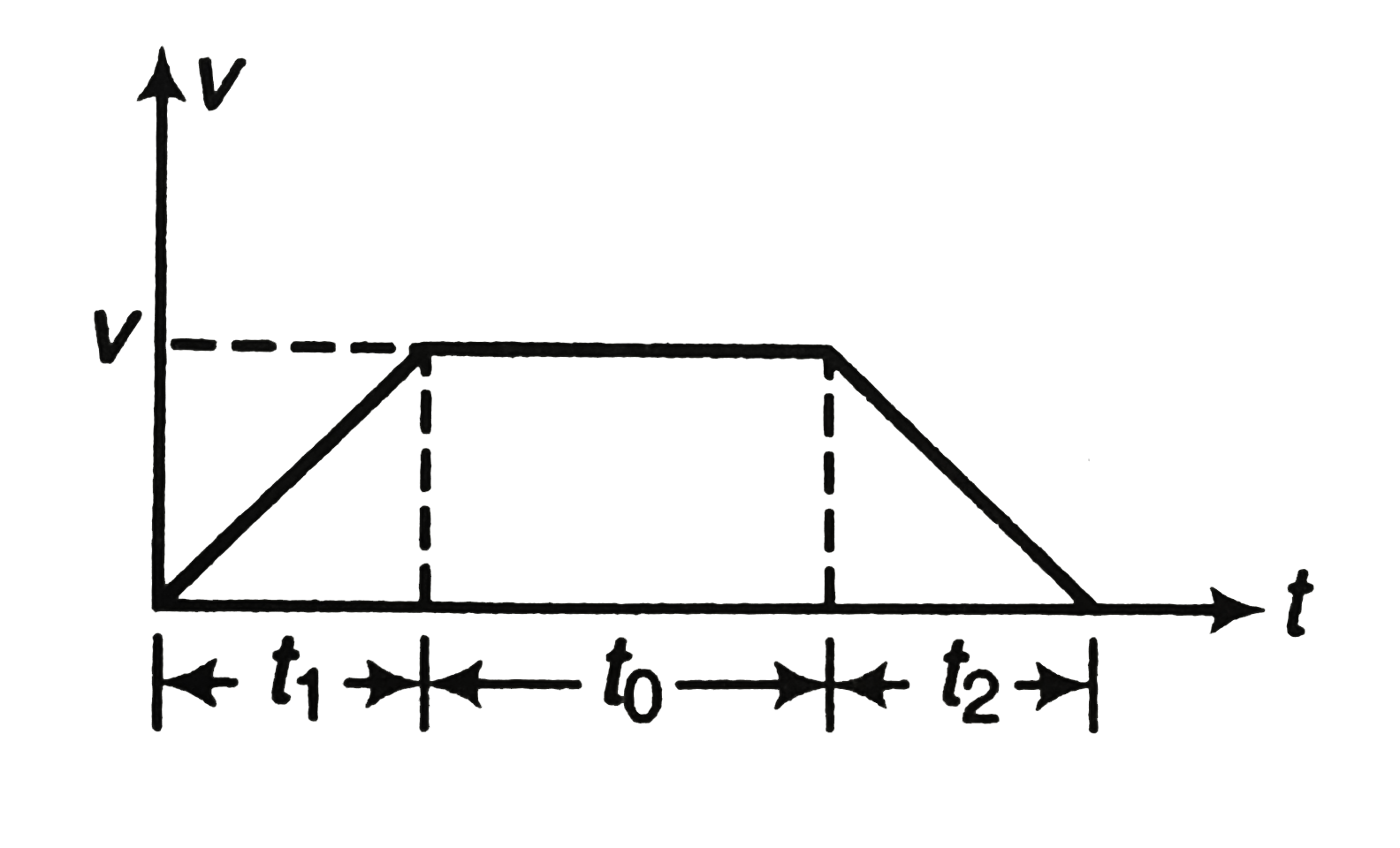The speed of a train increases at a constant rate α from zero to v and then remains constant for an interval and finally decreases to zero at a constant rate β. The total distance travelled by the train is l. The time taken to complete the journey is t. Then,
t=l(α+β)αβ
t=lv+v2(1α+1β)
t is minimum when v=√2lαβα−β
t is minimum when v=√2lαβα+β
The correct Answer is:B, D
v=αt1⇒t1=vα
v=βt2⇒t2=vβ

∴t0=t−t1=(t−vα−vβ)
Now, l=12αt21+vt0+12βt22
=12(α)(va)2+v(t−vα−vβ)+12(β)(vβ)2
=vt−v22α−v22β
∴t=lv+v2(lα+1β)
For t to be minimum its first derivation with respect
to velocity be zero or,
0=−lv2+α+β2αβ
∴v=√2lαβα+β
Topper's Solved these Questions
- BOOK - DC PANDEY ENGLISHCHAPTER - KINEMATICSEXERCISE - Comprehension7videos
KINEMATICS
- BOOK - DC PANDEY ENGLISHCHAPTER - KINEMATICSEXERCISE - Subjective Questions24videos
KINEMATICS
- BOOK - DC PANDEY ENGLISHCHAPTER - KINEMATICSEXERCISE - Subjective50videos
KINEMATICS
- BOOK - DC PANDEY ENGLISHCHAPTER - GRAVITATIONEXERCISE - (C) Chapter Exercises45videos
GRAVITATION
- BOOK - DC PANDEY ENGLISHCHAPTER - KINEMATICS 1EXERCISE - INTEGER_TYPE15videos
KINEMATICS 1
Similar Questions
The speed of a car increases uniformly from zero to 10ms−1 in 2s and then remains constant (figure)

a. Find the distance travelled by the car in the first two seconds.
b. Find the distance travelled by the car in the next two seconds.
c. Find the total distance travelled in 4s.View SolutionA car, starating from rest, accelerates at the rate f through a distance S, then continoues at constant speed for time t and then decelerates as the rate f/2 to come to rest. If the total distance travelled is 15 S, then
View Solution
Knowledge Check
- Question 1 - Select One
A train accelerates from rest at a constant rate α for some time and then it retards to rest at the constant rate β. If the total distance covered by the train is s, then the velocity of the train is
A[α+β2αβ×s]1/2B[α−β2αβ×s]1/2C[αβα+β×s]1/2D[αβα−β×s]1/2 - Question 2 - Select One
A train travels at a constant rate. If the train takes 13 minutes to travel m kilometers, how long will the train take to travel n kilometers?
A13mnB13nmC13mnDm13
A bus starting from rest, accelerates at the rate of f through a distance S, then continues at constant speed for time t and declerates at the rate f/2 to come to rest. If the total distance travelled is 15 S then S =
View SolutionA car, starting from rest, accelerates at the rate f through a distance s, then continues at constant speed for time t and then decelerates at the rate f/ 2 to come to rest. If the total distance travelled is 15 s, then
View SolutionA train accelerates from rest at a constant rate a for time t1and then it retards at the constant rate b for time t2 then comes to rest. Find the ratio t1/t2.
View SolutionA car accelerates from rest at a constant rate 'alpha' for some time after which it decelerates at a constant rate β to come to rest. If the total time elapsed is t, the maximum velocity acquired by the car is given by :
View SolutionA lift ascends with constant acceleration a=1ms−2, then with constant velocity and finally, it stops under constant retardation a=1ms−2. If total distance ascended by the lift is 7 m, in a total time of the journey is 8 s. Find the time (in second) for which lift moves with constant velocity.
View SolutionA particle, starting from rest, moves in a straight line with constant acceleration a0 for a time interval t0.Then is accelerates at a constant rate 2a0 for time interval 2t0 .The distance travelled by the particle in time 3t0 from the starts is S . Then Sa0t20=
View Solution
